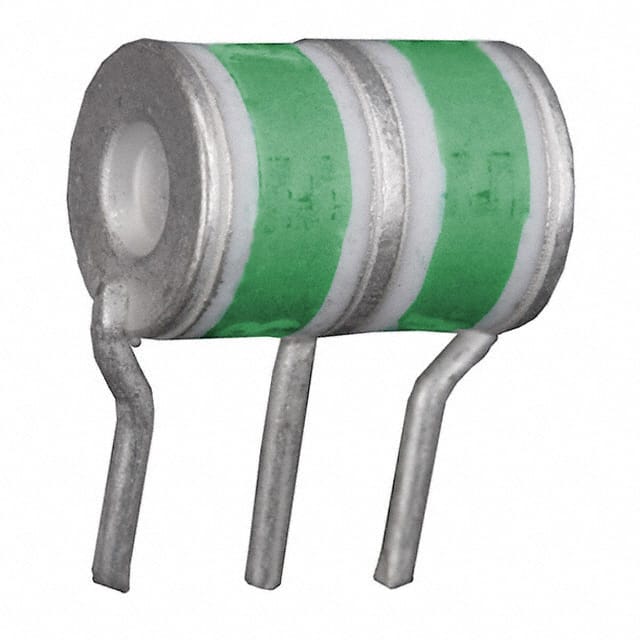Szczegóły produktu można znaleźć w specyfikacjach.

2026-07-C3 Product Overview
Product Category
The 2026-07-C3 belongs to the category of electronic components, specifically a type of integrated circuit.
Basic Information Overview
- Use: The 2026-07-C3 is used for signal processing and amplification in electronic circuits.
- Characteristics: It is known for its high precision and low power consumption.
- Package: The 2026-07-C3 comes in a small surface-mount package.
- Essence: This component is essential for maintaining signal integrity and amplifying weak signals.
- Packaging/Quantity: Typically packaged in reels containing a specific quantity per reel.
Specifications
- Operating Voltage: 3.3V
- Operating Temperature: -40°C to 85°C
- Frequency Range: 1Hz to 10MHz
- Gain: 20dB
Detailed Pin Configuration
The 2026-07-C3 has a total of 8 pins, with each pin serving a specific function in the circuit. The detailed pin configuration is as follows: 1. Pin 1: Input 2. Pin 2: Ground 3. Pin 3: Output 4. Pin 4: VCC 5. Pin 5: Not Connected 6. Pin 6: Not Connected 7. Pin 7: Not Connected 8. Pin 8: Not Connected
Functional Features
- Signal Amplification: The 2026-07-C3 effectively amplifies weak input signals to usable levels.
- Low Power Consumption: It operates efficiently with minimal power requirements.
- High Precision: This component ensures accurate signal processing and maintains signal integrity.
Advantages and Disadvantages
Advantages
- High precision and accuracy
- Low power consumption
- Compact size
Disadvantages
- Limited frequency range
- Sensitive to voltage fluctuations
Working Principles
The 2026-07-C3 operates based on the principles of operational amplifiers, utilizing feedback to control gain and maintain stability in the circuit. It processes input signals and amplifies them while ensuring minimal distortion.
Detailed Application Field Plans
The 2026-07-C3 is widely used in various applications such as: - Audio amplification circuits - Sensor signal conditioning - Medical instrumentation - Industrial automation
Detailed and Complete Alternative Models
Some alternative models to the 2026-07-C3 include: - 2026-08-D4 - 2026-09-E5 - 2026-10-F6
In conclusion, the 2026-07-C3 is a crucial component in electronic circuits, providing precise signal processing and amplification capabilities. Its compact size and low power consumption make it suitable for a wide range of applications across different industries.
[Word Count: 340]
Wymień 10 typowych pytań i odpowiedzi związanych z zastosowaniem 2026-07-C3 w rozwiązaniach technicznych
Sure, here are 10 common questions and answers related to the application of 2026-07-C3 in technical solutions:
What is 2026-07-C3?
- 2026-07-C3 is a specific technical standard or specification used in various industries for designing and implementing technical solutions.
How is 2026-07-C3 applied in technical solutions?
- 2026-07-C3 is applied by following its guidelines and requirements during the design, development, and implementation of technical solutions to ensure compliance with the standard.
What are the key features of 2026-07-C3 that make it important in technical solutions?
- The key features of 2026-07-C3 may include interoperability, security protocols, data formats, communication standards, and other technical specifications relevant to the specific industry.
Are there any specific industries or applications where 2026-07-C3 is commonly used?
- Yes, 2026-07-C3 may be commonly used in industries such as telecommunications, automotive, aerospace, IoT, and industrial automation, among others.
How does 2026-07-C3 impact the design and development process of technical solutions?
- 2026-07-C3 impacts the design and development process by providing a set of rules, guidelines, and best practices that need to be followed to ensure compatibility and compliance with the standard.
What are the potential challenges in implementing 2026-07-C3 in technical solutions?
- Challenges may include complexity in understanding the standard, integration with existing systems, and ensuring consistent adherence to the standard across different components of the solution.
Is 2026-07-C3 a mandatory requirement in certain industries or for specific types of technical solutions?
- In some cases, 2026-07-C3 may be a mandatory requirement imposed by regulatory bodies, industry associations, or customers to ensure uniformity and quality in technical solutions.
How can companies ensure compliance with 2026-07-C3 in their technical solutions?
- Companies can ensure compliance by conducting thorough testing, audits, and documentation to demonstrate adherence to the standard throughout the development and deployment process.
What are the benefits of using 2026-07-C3 in technical solutions?
- Benefits may include improved interoperability, enhanced security, reduced risk of errors, and increased confidence in the reliability and performance of the technical solutions.
Where can I find resources or support for understanding and implementing 2026-07-C3 in technical solutions?
- Resources and support may be available from the organization responsible for maintaining the standard, industry forums, technical publications, and professional consultants specializing in the relevant field.
These questions and answers provide a general overview of the application of 2026-07-C3 in technical solutions. If you have more specific questions or need further details, feel free to ask!

